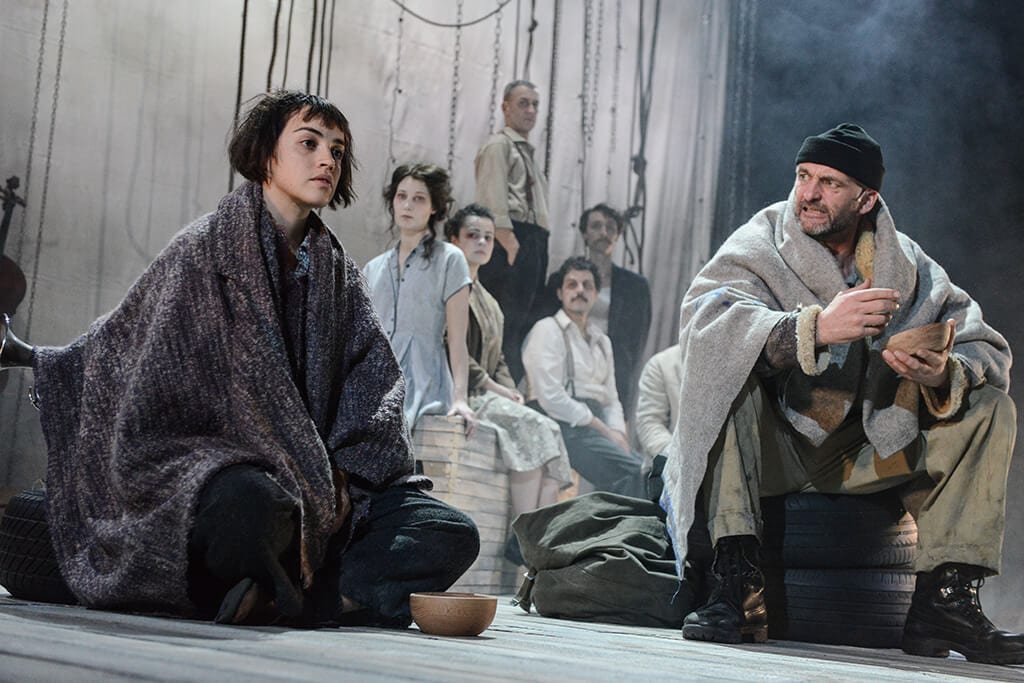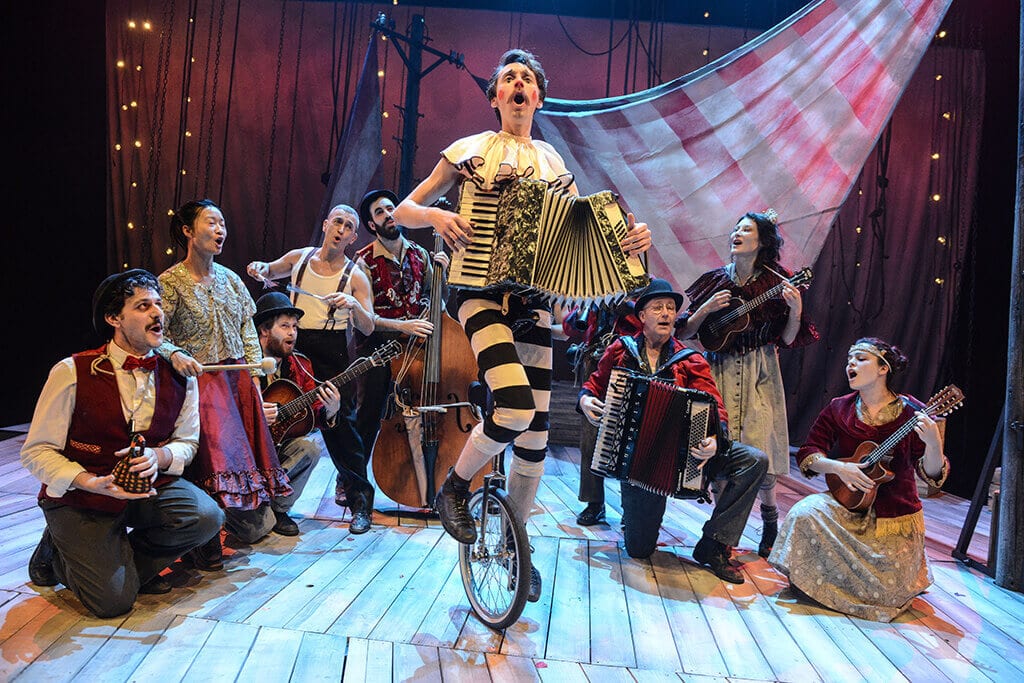The heyday of Italian neorealism in cinema lasted only a few years but its legacy can still be felt today. Thanks to the genius of Roberto Rossellini, Luchino Visconti, and Federico Fellini, to mention just a few, the stories of poverty-stricken, post-war Italy contributed to a new artistic language– somewhere in between documentary and poetry.
Mike Akers’ La Strada, based on Fellini’s cinematic masterpiece, gives a glimpse of the hefty legacy of economic depression left by the Second World War, when people found relief from the grimness of their daily life in watching street artists or the circus. The latter two elements are the core of this play; in fact the performance alternates between theatrical moments and musical intermezzos with amazing singers, like in the bar scene, with a full orchestra on stage. The circus atmosphere is carefully recreated.
In these settings the story of simple-minded Gelsomina unfolds. Her mother sells her for 10,000 lire to the brutish street artist Zampanó, who impresses people by breaking a chain with his chest. She starts an ‘on the road’ adventure and experiences the difficulties of real life for the first time. The play is centred around three main characters: Audrey Brisson’s Gelsomina lives in a world of her own. Every new situation is a source of anxiety for her. She is brutally trained as a performer by her master Zampanó, like a dog; but she doesn’t mind as long as her basic needs are satisfied. Zampanó, interpreted by a corpulent and convincing Stuart Goodwin, shows no compassion whatsoever to the people around him, and has a short temper. The Fool is the third main character, superbly interpreted here by Bart Soroczynski. With his pungent irony, he brings Zampanó to rage and to a tragic end. But at the same time, he remains the most empathetic of the three major characters. He is the first to acknowledge Gelsomina potential, thinking that she was good at something after all and bringing her to life. The choir, singers, and orchestra, thanks to wise direction by Sally Cookson, also serve as mobile staging, in addition to amplifying the feelings of the main characters.
Although comparison with the movie is not fair, it is nevertheless inevitable.
There are many merits to this production: It is faithful to the psychology of the movie, and the characters are well defined. But all the intense poetry of the movie is missing, as well as the subtlety and psychological finesse of Fellini who depicts the brutal co-dependency between Zampanó and Gelsomina with the touch of a genius. And the social aspects of the film, such as the extreme poverty, serve as background to the play but are not properly developed as in the movie.
Stories like this were the norm in post-war Italy. In the end it is a very colourful and entertaining piece of work and a delight both visually and musically.



